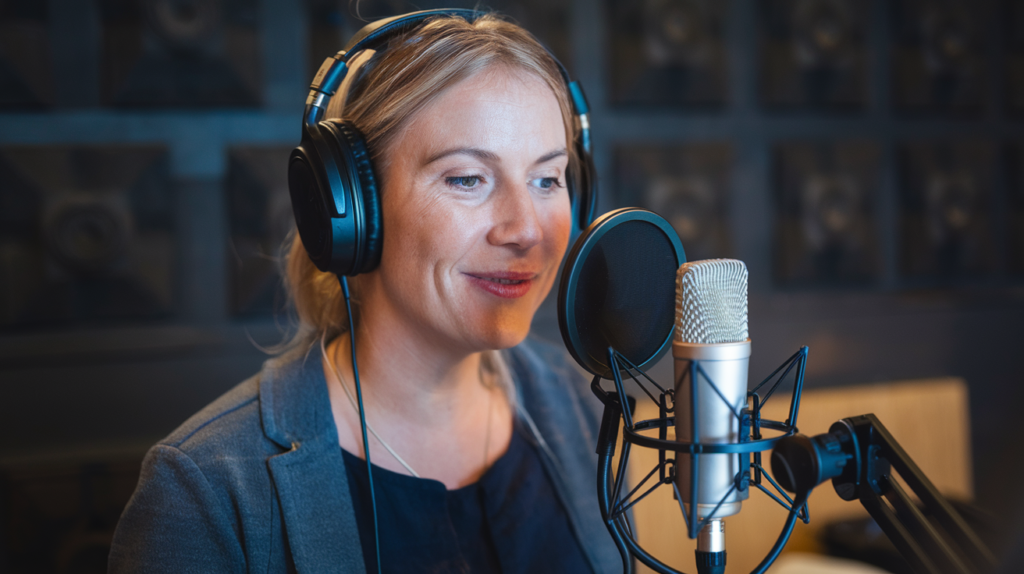Key Takeaways
- Resurgence of Te Reo Māori: The Maori language has undergone a remarkable revival since the 1970s, transitioning from near extinction to a vibrant part of New Zealand’s cultural identity.
- Grassroots Movements: Community-led initiatives, starting with the establishment of kohanga reo (language nests) in 1982, have been pivotal in promoting te reo through immersive learning environments for children.
- Government Support: The recognition of te reo as an official language through the Māori Language Act 1987 has led to increased funding and resources for education and media representation.
- Educational Integration: Te reo is now included in primary, secondary, and tertiary educational frameworks, ensuring that young people engage with their native language early on.
- Cultural Events and Media Representation: Dedicated Māori programming on television and radio, along with community events and workshops, enhances exposure to te reo while fostering cultural pride among speakers and learners.
- Ongoing Challenges: Despite significant successes in revitalization efforts, challenges remain such as historical suppression of the language and accessibility issues in remote areas.
Have you ever wondered how a language can come back to life? The Maori language revitalization history is a powerful story of resilience and cultural pride. Once on the brink of extinction, te reo Maori has seen a remarkable resurgence thanks to passionate efforts by communities and advocates.
Overview of Maori Language Revitalization History
Maori language revitalization, known as te reo Maori, has experienced significant transformations since the late 20th century. The journey began in the 1970s when concerns over declining fluency emerged among Maori communities. Activists recognized the urgent need to preserve their linguistic heritage.
In response, grassroots movements initiated programs aimed at teaching te reo in schools and homes. The first kohanga reo (language nests) opened in 1982, providing immersive environments for preschoolers. These initiatives emphasized cultural identity and community involvement.
By the early 1990s, government support increased for Maori language education and broadcasting. Legislation like the Māori Language Act 1987 established te reo as an official language of New Zealand, fostering greater visibility and respect. The introduction of radio stations and television programs featuring te reo further enhanced its presence in daily life.
Today, various resources such as online courses and mobile apps continue to promote learning opportunities. Community events celebrate te reo through festivals and workshops, encouraging intergenerational transmission of language skills. This resurgence reflects a commitment to reclaiming cultural pride while ensuring future generations can connect with their heritage through a vibrant living language.
Key Events in Maori Language Revitalization
Key events mark the significant journey of te reo Maori revitalization. This timeline showcases the efforts that transformed a nearly extinct language into a vibrant part of New Zealand’s cultural identity.
Early Preservation Efforts
In the 1970s, awareness grew about declining fluency in Maori communities. Activists and educators began grassroots movements focused on teaching te reo in homes and schools. The establishment of kohanga reo (language nests) in 1982 represented a landmark moment, providing immersive environments for children to learn their native tongue. These early initiatives highlighted community involvement and set the foundation for future revitalization efforts.
Government Initiatives
Government support emerged prominently in the early 1990s. The Māori Language Act 1987 officially recognized te reo as one of New Zealand’s official languages, cementing its status legally and culturally. Following this legislation, various programs were launched to promote te reo across different sectors, including education and media. Radio stations began broadcasting in te reo, and television programming featured content specifically designed for Maori audiences. Such initiatives significantly increased visibility and accessibility, contributing to a broader societal embrace of the language today.
These key events reflect resilience within Maori communities while ensuring future generations connect with their heritage through an actively spoken language.
Community Involvement in Revitalization
Community involvement plays a crucial role in the revitalization of te reo Māori. Through collective efforts, communities have fostered an environment that nurtures language learning and cultural pride.
Role of Maori Organizations
Maori organizations serve as vital hubs for promoting te reo. They create programs that encourage language use in everyday life. These organizations host workshops, cultural events, and classes tailored to various age groups. By engaging families and individuals, they reinforce the importance of maintaining language fluency across generations. Their initiatives often include partnerships with local schools to integrate te reo into curricula, ensuring children learn their native tongue from an early age.
Grassroots Movements
Grassroots movements significantly impacted the resurgence of te reo Māori. Beginning in the 1970s, these community-led initiatives addressed concerns about declining fluency within Maori communities. Activists organized protests and campaigns advocating for language rights and education reforms. Notably, kohanga reo (language nests) emerged from these efforts, creating immersive environments where young children could learn te reo through play and interaction. These grassroots actions sparked a widespread movement that emphasized the value of speaking te reo Māori daily and inspired ongoing support for cultural preservation practices throughout New Zealand.
Communities continue to drive revitalization efforts by emphasizing collaboration, creativity, and commitment to future generations’ heritage through accessible educational resources and vibrant engagement activities.
Current Status of Maori Language
Te reo Māori experiences a vibrant status today, marked by increased visibility and usage across various sectors. As of 2023, approximately 25% of Māori identify as fluent speakers, reflecting ongoing revitalization efforts. The growth in educational programs ensures that more young people engage with the language from an early age.
Educational frameworks now include te reo at primary and secondary levels, alongside tertiary institutions offering advanced courses. Immersive environments remain crucial; initiatives like kōhanga reo (language nests) continue to thrive, providing nurturing spaces for children to learn through play and community involvement.
Media representation has also expanded significantly. Television networks feature dedicated Māori programming, while radio stations broadcast exclusively in te reo. This accessibility enhances exposure for both fluent speakers and learners alike.
Community organizations actively promote te reo through cultural events, workshops, and online resources. These platforms create opportunities for people of all ages to connect with their heritage while fostering a sense of pride in speaking the language daily.
Government support remains strong following the passage of the Māori Language Act 1987. Funding for cultural projects helps sustain language initiatives that keep te reo alive within families and communities.
As you consider ways to support this rich linguistic heritage, engaging with local events or participating in classes can make a difference. Together, these actions contribute to maintaining te reo Māori’s relevance today and ensuring its legacy continues into future generations.
Challenges and Successes
Māori language revitalization faces numerous challenges and successes that shape its journey. One significant challenge is the historical suppression of te reo Māori, which led to a dramatic decline in fluent speakers. This colonial legacy created barriers to learning, as many Māori families hesitated to speak their native tongue, fearing discrimination or marginalization.
Successes emerged through community-driven initiatives that empowered individuals to reclaim their language. The establishment of kohanga reo in 1982 marked a pivotal moment, offering immersive environments for children. These language nests encouraged families to engage with te reo daily, fostering cultural pride and fluency from an early age.
Education systems faced obstacles as well. Initially resistant to integrating te reo into curricula, schools gradually adopted inclusive practices due to advocacy efforts. Today, primary and secondary education frameworks include te reo at various levels. Tertiary institutions also offer advanced courses, ensuring robust pathways for learners interested in deepening their understanding of the language.
Media representation significantly improved over recent years. Dedicated Māori programming on television and radio provides valuable resources for fluent speakers and learners alike. These platforms promote engagement with te reo while celebrating Māori culture through storytelling.
Community organizations play a vital role in sustaining this momentum by organizing workshops and cultural events that encourage everyday use of the language. Their efforts foster connections among speakers and promote intergenerational transmission of knowledge.
Despite ongoing challenges like limited resources or accessibility issues in remote areas, government support remains strong. Funding for projects aimed at enhancing Māori language initiatives helps sustain these communities’ dedication to preserving their linguistic heritage.
Overall, the history of Māori language revitalization highlights both the resilience of its people and the importance of collective action in overcoming adversity.
Conclusion
The revitalization of te reo Māori stands as a testament to the strength and determination of its people. You’ve seen how community efforts have transformed what was once a declining language into a vibrant part of everyday life. With educational programs and media representation growing, the future looks promising for te reo.
Your involvement can make a difference too. By participating in local events or classes, you help nurture this rich linguistic heritage. As te reo continues to thrive, it not only enhances cultural identity but also inspires future generations to embrace their roots proudly.
Frequently Asked Questions
What is te reo Māori?
Te reo Māori is the indigenous language of the Māori people in New Zealand. Once nearly extinct, it has seen a resurgence due to community efforts and government support, becoming an official language under the Māori Language Act 1987.
When did the revitalization of te reo Māori begin?
The revitalization efforts for te reo Māori began in the 1970s when concerns over declining fluency prompted grassroots movements to establish programs aimed at teaching and preserving the language.
What are kohanga reo?
Kohanga reo, or „language nests,” are immersive environments where young children learn te reo Māori through play and interaction. The first kohanga reo opened in 1982, marking a significant step in language revitalization.
How has government support helped te reo Māori?
Government support increased significantly after the passage of the Māori Language Act in 1987, which solidified te reo as an official language. This led to funding for education programs and media initiatives promoting its use across various sectors.
What role do community organizations play in revitalizing te reo?
Community organizations are crucial in promoting te reo through workshops, cultural events, and classes tailored for different age groups. They often collaborate with schools to integrate te reo into curricula and encourage daily use within families.
Is there a current status on speakers of te reo Māori?
As of 2023, about 25% of Māori identify as fluent speakers of te reo Māori. Ongoing educational frameworks have made the language accessible from primary school through tertiary levels, contributing to its vibrant status today.
What challenges does te reo face today?
Despite progress, challenges remain such as limited resources in remote areas and historical stigma associated with speaking Maori. However, ongoing community-driven initiatives continue to empower individuals reclaim their linguistic heritage.
How can I support the revitalization of te reo Māori?
You can support this movement by engaging with local events that celebrate Maori culture or participating in classes designed for learning te reo. Such involvement helps preserve this rich linguistic heritage for future generations.







